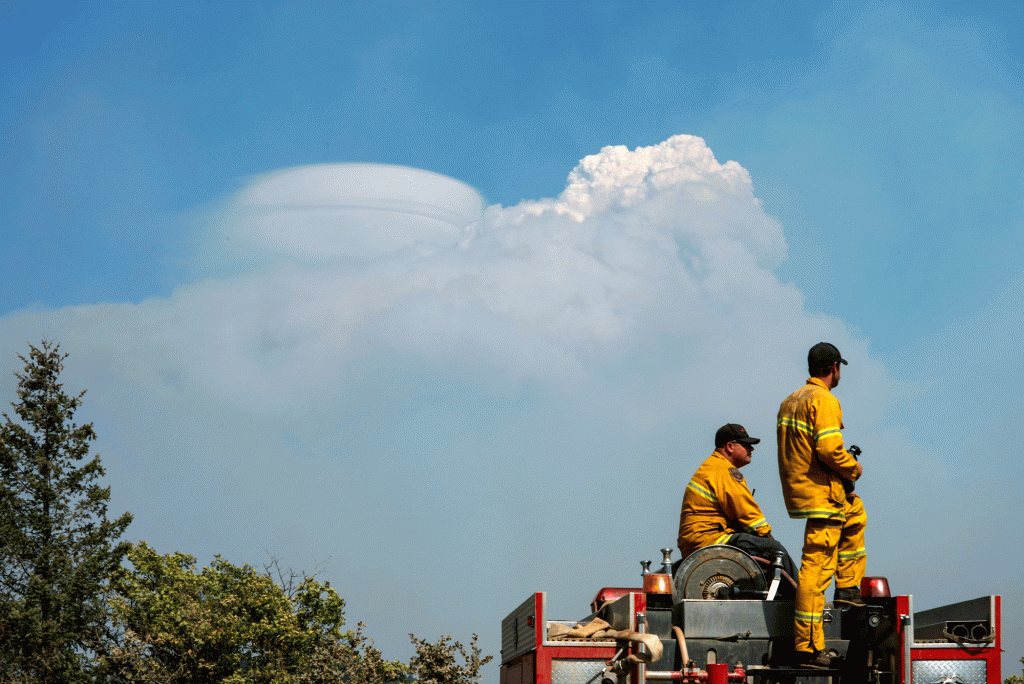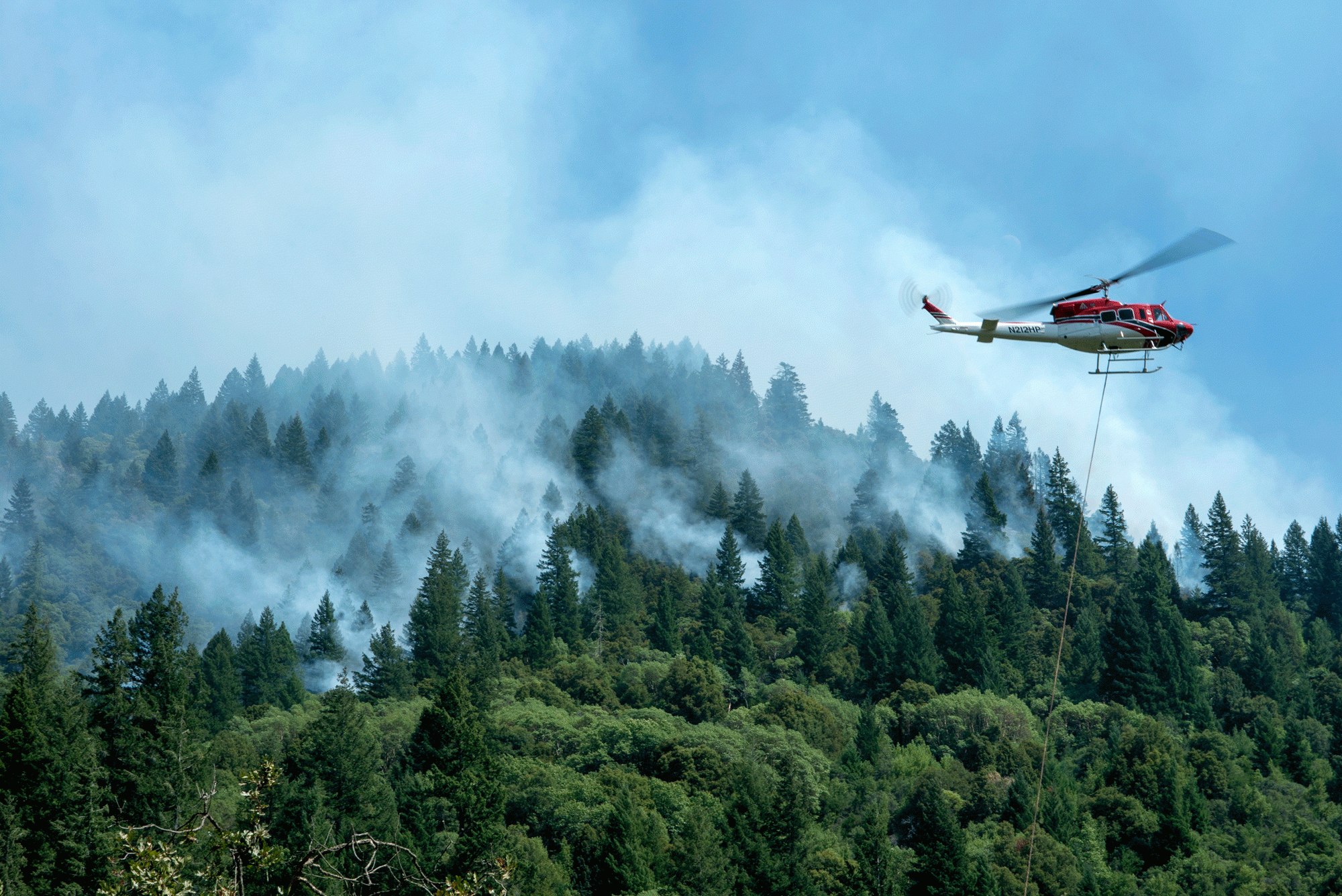Last year saw almost $5 billion spent on wildfire readiness and response and 2019 promises to be another challenging year as drought conditions and the impacts of climate change take their toll, federal and state officials revealed Thursday in testimony before the U.S. Senate Committee on Energy and Natural Resources.
“We ended 2018 with the destruction of an entire community in Paradise, California, with the loss of 85 lives and billions of dollars in economic losses,” said Jeff Rupert, director of the federal Office of Wildland Fire in the Department of the Interior. “It’s hard to imagine a repeat of this experience but this is the potential reality we face this year.”
Rupert said the nearly $5 billion price tag on wildfire prevention and suppression proved to be the most ever, in a year when 58,000 wildfires burned more than 8.7 million acres on federal, state, tribal and private land. The previous spending record was $2.7 billion in 2017.
Nineteen firefighters died, according to the USDA Forest Service, and more than 25,000 structures were destroyed in wildfires, the worst nationally since 1999, said Shawna Legarza, director of fire aviation and management for the U.S. Forest Service.
While drought conditions across the country have improved since 2018, according to the National Interagency Fire Center, wildfire risk is expected to increase over the summer, particularly for the West Coast states, beginning in July and through September. As of late May, some 13,000 wildfires have already burned more than 240,000 acres around the country, including 45,000 acres in Alaska.
The majority of the country will see a “normal” potential for large wildfires, which Rupert said shouldn’t dissuade communities from being prepared.
“This does not mean that there will be no large wildfires, but rather that wildfire potential will be typical for those regions,” Rupert told the U.S. Senate Energy and Natural Resources Committee.
For those living in close proximity to areas threatened by wildfires, the Pacific Crest Trail Association (PCTA) suggests packing a go-bag with essential items such as food, maps, first-aid kits and sanitation supplies, in the event that you need to evacuate. The Canadian Department of Environment and Natural Resources recommends learning where the nearest shelters are and being ready to leave your home or campsite at a moment’s notice, especially if located uphill, where fires typically spread faster.
“Fire can move like a freight train—many times faster than you can run,” the PCTA reminds hikers.
Warmer-than-average temperatures are likely west of the Continental Divide this year, particularly on the West Coast, according to the National Interagency Fire Center. Entering June, the driest areas are along the Mexican border and in Washington state and the Southeast.
“Higher elevations will enter fire season later except along the Canadian border in Washington state where overall dryness will lead to an average start with a potential for above normal activity,” the agency’s June 2019 outlook states. “Alaska will peak in June and wind down in July.”

Firefighters monitor fires and smoke columns during the Mendocino National Forest, Calif. in 2018. (Photo Credit: Cecilio Ricardo/Forest Service)
Agencies tasked with funding wildfire mitigation have faced financial challenges in recent years as the threat becomes greater, more expensive and more unpredictable due to climate change. Underfunded fire suppression budgets were supplemented with funds raided from other Forest Service accounts, that a 2018 wildfire funding fix helps avoid.
Congress’ move also established a $2.25 billion contingency fund for the Forest Service’s wildfire suppression efforts, which becomes available in fiscal year 2020 (fall 2019) and runs through 2027. The annual amount deposited will eventually increase to $2.9 billion.
The partial federal government shutdown that began in late 2018 also affected wildfire preparation funding, Rupert said in testimony, though federal officials say they are now prepared.
“The 35-day lapse of appropriations in late 2018 and into 2019 affected the department’s immediate wildfire preparations for 2019,” Rupert said. “Most contracting, hiring, training, restocking of equipment caches, and the preparation of firefighting facilities and structures were all delayed.”
Rupert said the Department of the Interior prioritized preparations for the most at-risk areas to make up for the delay and has since finished preparations.
Shawna Legarza, director of fire aviation and management for the Forest Service, said 86 percent of wildfires are caused by humans. Those causes include unattended campfires, the burning of debris, equipment use and malfunctions, negligently discarded cigarettes, and intentional acts of arson, according to nearly 20 years of data compiled by the Forest Service.
“So 86 percent of wildfires could be prevented,” Legarza said.
When heading into the backcountry in states affected by wildfires, the Forest Service advises checking with local land managers to rule out closures and using alternatives to campfires during periods of high fire danger. Smoke from wildfires can force the closure of recreation sites and cause health concerns. The CDC recommends taking local air quality into account and monitoring the Air Quality Index for places where you plan to recreate this summer.
While in the backcountry, if you discover your campsite is covered in smoke, especially dense smoke, the PCTA says it’s time to move: Follow the direction the smoke is flowing; don’t move toward it. Fires are usually pushed by the prevailing winds, but in the mountains, winds can be erratic.
Spot fires can also surprise hikers. These ignite from embers carried by the wind or from burning material that falls downhill. If you’re stranded, the Forest Service recommends laying out materials with bright colors, such as orange, red and silver, that can be seen by firefighters in airplanes and helicopters.
The best places to take shelter have the least organic material and the most moisture, according to the PCTA. Meadows, rock fields, swampy areas or bodies of water are the best areas to seek refuge.
For more information on wildfire preparedness, use the following state and federal information resources:
FEDERAL
WESTERN STATE FIRE AGENCIES
- California: CAL FIRE or 916-653-5123
- Oregon: Oregon Department of Forestry or 503-945-7440
- Washington: Washington Department of Natural Resources or 360-902-1300
- Idaho: Idaho Department of Lands or 208-334-0233
- Montana: Montana Department of Natural Resources and Conservation or 406-542-4300


